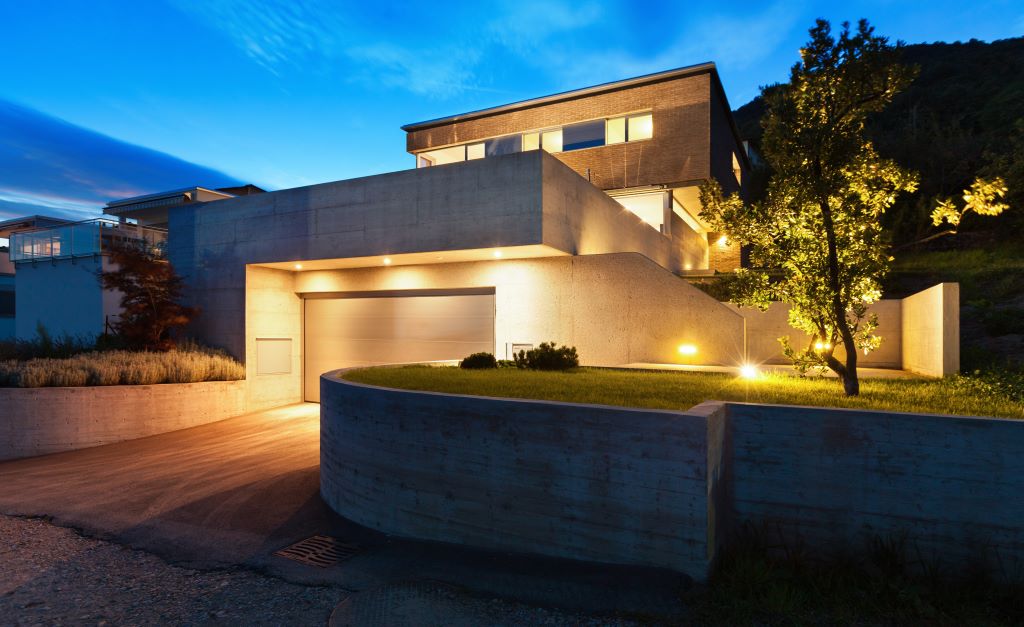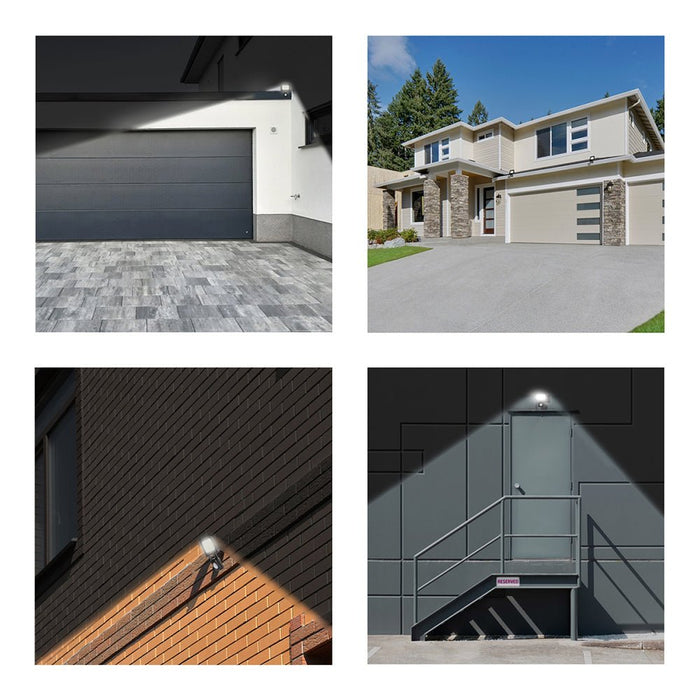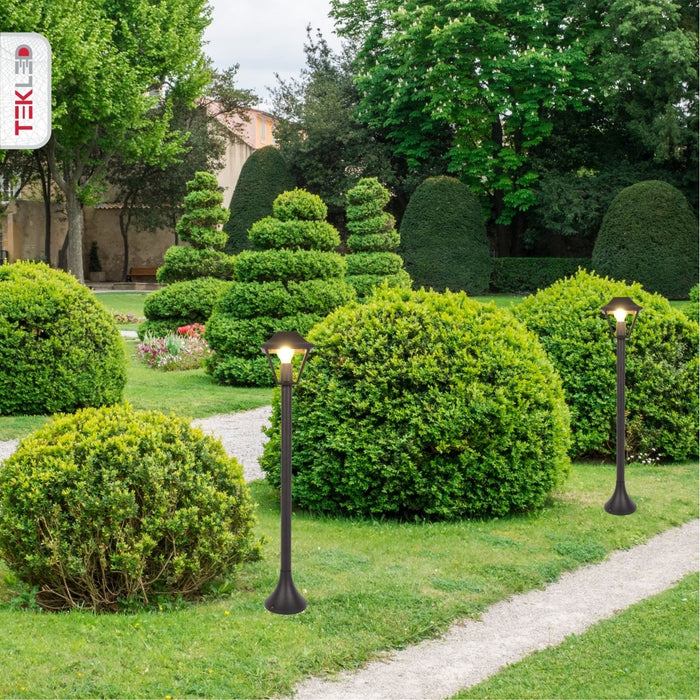
The purpose of outdoor lighting is to make outdoor activities such as production, transportation, construction, city beautification, etc. more effective, safe, secure, and comfortable during hours of low natural light. Outdoor lighting fixtures are outdoor electrically powered lighting fixtures that can be either permanently mounted or moveable and are used to illuminate streets, parking lots, landscapes, architectural features, and buildings. They are used equally optimally on both commercial and residential properties.

What Does Outdoor Lighting Do?
Outdoor lighting has become as vital as indoor lighting and more people have started to agree with this. With proper and functional outdoor lighting, one can enjoy a relaxing atmosphere and ensure their safety during dark. It also has a great impact on your garden, patio and backyards and has the potential to transform them into a great place for relaxing and unwinding. Outdoor lighting is crucial not only for homes but also for commercial buildings, offices and even public places like the roads, pavements and parks. They are essential to ensure safety and avoid crimes and accidents. With well lit corners, it is safer to navigate the nighttime for everyone.
What is the Importance of Outdoor Lighting?
Modern outdoor spaces are extensions of homes as more people are investing in enhancing the overall beauty of their spaces. Backyards now have dining spaces, lounging areas and small gardens to flaunt their beauty and for the residents to enjoy a comfortable time outside. This has also increased the popularity of outdoor lighting. Today’s outdoor lighting can serve a variety of purposes in the workplace and as well as at your home like enhancing the aesthetic appeal while also serving practical functions. Let’s look at some of the benefits of outdoor lighting.
- Elevated aesthetic: Outdoor lighting elevates the natural beauty of your home by highlighting the architectural features, illuminating the pathways and creating an enjoyable ambiance. It allows you to enjoy your backyard view all night long and can also direct attention towards your house itself. With the help of decorative lights, wall sconces and garden lights, you can amp up your outside décor like never before.
- Functionality: Outdoor lighting can facilitate nighttime activities like having a game of badminton or enjoying an intimate meal with friends during cosy autumn nights. With nighttime illumination, you also get increased visibility for everything.
-
Safety and security: During the nights, outdoor lighting allows you to move around and navigate your surroundings safely even in the dark. You can install post-mounted lanterns to light up the pathways, driveways or railings. You can also use step lights for the stairs to ensure that no one tips over them. Using garden lights or motion sensor flood lights can protect your home against intruders as well.

How Should Outdoor Lighting Be?
Outdoor lighting does not only complete the look for your house but is also very important to create safer walkways for your family and guests at night. Before deciding your lighting options, it is important to assess the different outdoor spaces such as the entry area, the patio, the garden or even the garage. Pair your lights to your outdoor furniture and accessories to complement the exterior designs and provide a visual balance to your house. Outdoor sconces and wall lights are excellent as decorative lights and also accent the architecture. It is highly important to choose waterproof and durable lighting options for the outdoors as that is where the lights undergo the most wear and tear. Waterproof lights are also important for safety during rains or storms. Always remember to check the IP (Ingress Protection) rating of a light bulb before installing it outside. The IP rating of a bulb defines its levels of sealing effectiveness against things like soil or water.
You can also pick solar lights for outdoors as they are environment friendly as well as pocket friendly and can be used in situations where the lights need to stay on for a longer period of time. For comfort spaces such as the patio, it is recommended to have even illumination with the help of decorative lights such as festoon lights, string lights and other decorative fixtures. Their warm and light glow do not only elevate the ambience but also create a comforting, inviting atmosphere for you.
What are the Different Types of Outdoor Lighting?
Just as indoor lighting, outdoor lighting is an investment that offers valuable benefits in return. It helps improve safety and security, enhances the outdoor aesthetics and also completes your home décor. Based on the purposes you wish to achieve with your fixtures, there are various types of outdoor lighting to choose from. Let us have a look at some of the most common and popular outdoor lighting fixtures before you make your purchase.
- Path Lights: These are low-to-the-ground lights placed along walkways, driveways, or garden paths to safely guide people at night.
- Bollard Lights: These are sturdy, durable lights that are great for lighting paths. They're typically taller than other path lights, providing good illumination while also being a noticeable presence.
- Pedestal Lights: These are shorter than bollard lights but serve a similar purpose. They can be easily placed along a path to provide lighting.
- In-ground Lights: These are recessed lights that are installed directly into the ground. They're great for illuminating the path without being an obstacle.
- Solar Path Lights: These are energy-efficient lights that charge during the day and provide lighting at night.
- Post Lights: Installed atop posts or railings, these lights serve as beacons of light in outdoor settings, providing ample illumination for yards, gardens, and driveways.
- Lamp Post Top Lights: These are lights that are installed at the top of a lamp post(pole), often in the form of lanterns.
- Bollard Lights: These can also function as post lights when placed on top of a post or pillar.
- Pillar Top Lights: Similar to lamp post top lights, these are designed to be installed on top of a pillar or column.
- Wall Lights and Sconces: Installed on walls, they provide functional and decorative lighting that accentuates the architecture.
-
Wall Lanterns: These can provide a traditional, timeless look and can be used to light up an outdoor area.

- Wall Sconces: These are typically used for accent lighting, and they come in a variety of styles to suit different architectural designs.
- Outdoor Wall Spotlights: These provide focused light and can be used to highlight architectural features.
- Deck and Patio Lights: These lights are designed to illuminate outdoor living spaces, enhancing the ambiance and making the space usable even after sundown.
- Deck Post Cap Lights: These are installed on the tops of deck posts, providing both decorative and functional lighting.
- Outdoor String Lights: These can create a wonderful ambiance when hung over a patio or deck.
- Flush Mount Ceiling Lights: These are used in covered patios or decks, providing a broad spread of light.
- Recessed Deck Lights: These can be installed into the deck itself, providing a low-profile lighting solution.
- Landscape Lights: Often used for highlighting trees, plants, and other elements of a garden or lawn. They can also serve to light up pathways or focus on water features.
-
Floodlights: These are powerful lights that can be used to illuminate large areas of a landscape, such as a large tree or a portion of a yard.

- Spotlights: These are used for focusing light on specific landscape features like trees, sculptures, or water features.
- Garden Lights: These are similar to path lights but are often more decorative and are used to light up garden beds.
- Pond or Pool Lights: These are waterproof lights that can be used to illuminate water features.
- Wall Washer Lights: These provide broad, even lighting across large surfaces, such as walls, and are often used to highlight architectural features in the landscape. Wall washers can create dramatic effects, especially when illuminating textured walls, and can help to make an outdoor space feel larger and more inviting. They're particularly useful for emphasizing the relationship between the built and natural environment in a landscape setting.
What is the Best Lighting for the Outdoors?
Indoors and out, LED illumination is the finest option. LED lights can be used for extended periods of time without significantly increasing power bills because they consume significantly less energy than incandescent or even halogen bulbs.
All outdoor entertaining or gathering areas should be lit with gentle, warm lighting. When aiming to create a pleasant atmosphere, warmer hues like "soft white" are a wonderful option. For task or security lighting, cooler hues like "bright white" or "daylight" are ideal. Greenery can also be nicely illuminated with accent lights and bright white lights. The most practical outdoor landscape lighting for lighting up huge regions are floodlights. They are large-coverage spotlights with a high level of brightness. They frequently cast overhead lighting onto patios and driveways.
What Colour Temperature Is Best for Outdoor Lighting?
The main Kelvin range advisable when it comes to residential outdoor lighting is between 2500k and 4000k. It is best to save cooler colour temperatures, between 3000k and 4000k, for trees and plants and use warmer colour temperatures, around 2500k to 2700k, on architectural features. Compared to higher colour temperatures, it is believed to provide a more calming and hospitable psychological effect. Such colour temperatures provide enough light for everyone to move around comfortably and observe their surroundings without being too strenuous on the eyes.
What are the Points to Consider in Outdoor Lighting Design?
Outdoor lighting for your home is very common these days. From security lights to porch lights to even festival lights, people are paying as much attention to outdoor lighting as they do to the indoors. However, outdoor lighting requires more careful considerations than indoors. It is very important to follow safety protocols while installing these lights to avoid major fire risks and electrocution. Permanent or not, it is crucial to keep your lighting up to code and ensure safety for everyone. It is always wise to only use outdoor-rated fixtures, extension cords and lightbulbs. The weather outside changes all the time, so does the temperature with it. You need to use bulbs which can adapt to these changes. This will help the bulbs last long and conserve energy. Look for words like 'weatherproof, 'water resistant', 'adaptable' on the labels before buying fixtures or bulbs for outdoor locations. Avoid over lamping a fixture as overheating may cause damage to the insulation on the wires. Be careful while installing your lights and place them away from any kind of flammable materials. It is always wise to use cover for damp locations under a roof to protect a receptacle when not in use.
What is the Difference Between Indoor and Outdoor Lighting?
At first glance, one may assume that all lights are the same, and fixtures can be swapped at will. This, however, is not the case. Although there's an abundance of fixtures for both indoor and outdoor usage, the two types are not simply interchangeable. Actually, they differ in more ways than initially meets the eye. While some outdoor fixtures can be utilized indoors, indoor fixtures are not designed for outdoor use. Let's delve into the differences between indoor and outdoor lights.The most effective way to establish whether a light fixture is suitable for outdoor use is by examining its UKCA marking, which should be detailed in its product description. The UKCA (UK Conformity Assessed) is a certification mark that signifies conformity with the health, safety, and environmental protection standards for products sold within the United Kingdom.
UKCA for Indoor Use: This is the basic UKCA certification, suggesting the fixture is safe for indoor use and should avoid any moisture. These fixtures can be safely used in living rooms, bedrooms, hallways, and kitchens. Bulbs for these fixtures often fall under the IP rating of IP20 or below, indicating they are not designed to withstand any significant amount of moisture and should not be used outdoors.
UKCA for Damp Locations: Fixtures with this marking can resist slightly more moisture than those only rated for indoor use, meaning they are somewhat more water-resistant but not entirely. They are generally suitable for bathrooms, indoor pool areas, or utility rooms. They can also be used in fully covered outdoor areas such as covered porches or patios, where they are not directly exposed to rain or other water sources. These fixtures often come with an IP rating of IP44, indicating they can safely withstand a certain degree of moisture but should not be exposed to direct contact with water.
UKCA for Wet Locations: This UKCA marking indicates the fixture is entirely safe to be used outdoors, even in areas where there is direct exposure to moisture. These fixtures are absolutely necessary for outdoor areas such as open decks, porches, patios, or for outdoor decorative lighting. They often come with an IP rating of IP65 or above, demonstrating their ability to withstand direct or indirect contact with water.
It's important to bear in mind that using a fixture outside of its UKCA rating can cause it to fail and may also pose a fire risk. Always ensure to use the appropriate lighting fixtures for their designed environments.




